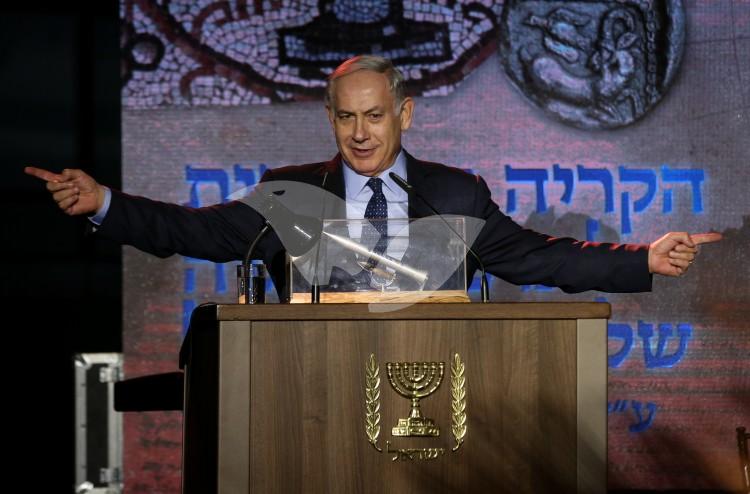
AA Director: UNESCO Decision Is ‘Diplomatic Front’ of ISIS Violence
Last week’s UNESCO resolution rejecting the link between the Jewish People and Jerusalem set the stage for a ceremony Wednesday to mark the inauguration of Israel’s National Campus for the Archeology of Israel.
At a ceremony featuring, Israel Antiquities Authority Director Israel Hasson, donors Jay and Jeanie Schottenstein and a slew of honoraries, Prime Minister Binyamin Netanyahu inaugurated the project saying the newest addition to Jerusalem’s museum landscape will serve as a critical link between future and past generations in the city.
Netanyahu recounted a request, made in the late 1990s to former Turkish Prime Minister Mesut Y?lmaz, for Ankara to return an engraved stone discovered in Jerusalem during the Ottoman Period in the late 19th Century. The stone describes the construction of Hezekiah’s Tunnel, in the City of David, and closely matches the Biblical description of that site.
“I offered him nearly anything in exchange for the artifact, but he simply couldn’t agree,” Netanyahu said. “I think he knew full well why he had to refuse. I believe he understood the power, the depth, the truth that that particular archeological finding gives to Jewish history, as recorded in the Bible. The stone and its inscription is a living testimony, one that moves me incredibly.”
The campus, expected to open in late 2017, is currently under construction in the Givat Ram neighborhood of the capital, between the Israel and Bible Lands museums and adjacent to the Hebrew University’s Givat Ram campus. Israel Antiquities Authority officials say the NIS 400 million, 36,000 square meter building will feature archeology laboratories, hundreds of thousands of artifacts as well as the National Library for the Archeology of Israel.
Israel Antiquities Authority Director Israel Hasson noted the threats to historical artifacts around the Middle East, particularly in Syria. He mentioned Syrian archeologist Khaled al-Asaad, who was beheaded in 2015 after refusing to turn over artifacts from the ancient Syrian city of Palmyra to members of the Islamic State group, and added that in contrast to other countries in the region, the establishment of a national home for local archeology is a holiday for all Israelis.
Finally, Hasson said the genesis of the project emerged during the 1990s Oslo Period, when it appeared the the Rockefeller Museum could be transferred to Palestinian administration.
“Look around the region, and you see that archeological artifacts are being destroyed and looted,” Hasson said. they killed who tried to defend. And UNESCO joined them last week, on the diplomatic front.
“I think we all can be proud that our answer to the terrible process is this building, our activities, that all of us involved in preserving the inheritance and the history of this land,” Hasson said.